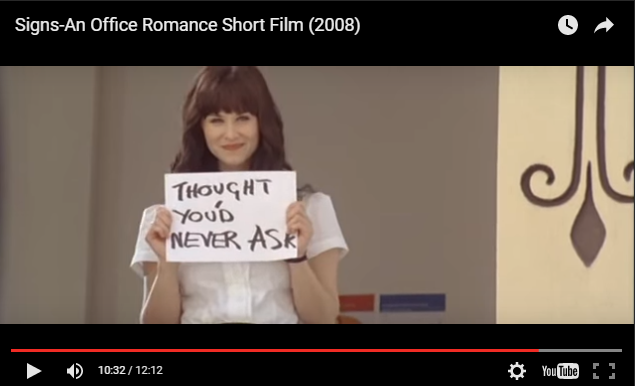A designer lessons ESL lesson plan developed by Myles Klynhout
Myles is a freelance English teacher from Sydney, Australia. He can often be found in the classroom surrounded by students who are dumbfounded by his Dutch surname and Australian accent as they try to work out exactly where on earth he’s from. When he’s not teaching you’ll find him heading briskly out of Barcelona on his push bike looking for the next mountain to climb.![]()
About the Project
 This is one of series of ELT resources developed by members of Serveis Lingüístics de Barcelona in collaboration with Designer Lessons. We are a cooperative of language teachers and related professionals who get together to lend and share materials, equipment and training in order to better ourselves professionally and economically. We also aim to distribute and market our work collectively. You can learn a little more about us and our objectives here.
This is one of series of ELT resources developed by members of Serveis Lingüístics de Barcelona in collaboration with Designer Lessons. We are a cooperative of language teachers and related professionals who get together to lend and share materials, equipment and training in order to better ourselves professionally and economically. We also aim to distribute and market our work collectively. You can learn a little more about us and our objectives here.
.
About the Lesson: 1 -1.5 hours (Adaptable for A2 – B2 levels)
In this lesson students follow a short silent film pausing to make predictions at different points along the way. In this sense, the lesson is conversation-driven. Although there are some suggestions for a little focus on vocabulary and form, the success of the lesson relies upon the teacher’s ability to manage the conversation in class, attend to emergent language and help students to better express what they wish to say through reformulation.
Stage One: Setting the Scene
Ask students whether they work 9am – 5pm or have a flexible timetable. In pairs, students discuss which timetable they prefer.
Set the scene for the film. Jason is a man in Sydney Australia working at his first job. Board the questions:
- What do you think Jason’s job is? Why?
- Why could he be unhappy with his job/life at the moment?
Play the short film SIGNS from the start to 2’47’’ and have students discuss their ideas. You could also take the opportunity to introduce the expression ‘stuck in a rut’.
Stage Two: Vocabulary Focus
Ask students to make a list of all the things he does during the day. Encourage the students to write down the verbs, e.g. wake up, get dressed, and play the film a second time from the start to 2’47’’.
Have the students compare notes with a partner. Next, in open class, elicit and board the vocabulary in a random order. The students may give you the infinitive verb – IMPORTANT: reformulate it on the board as a full phrase to show examples of how it collocates, e.g.
| Student Output | Teacher’s reformulation: board & model pronunciation |
| wake up | he wakes up early / wakes up late |
| stop alarm | turn the alarm off / snooze the alarm |
| photocopy | photocopy a document / make a photocopy of a document |
| coger el bus | catch the bus to work |
| a meeting | have a meeting with the boss |
Ensure the meaning of each is understood by demonstrating the action, going back to the film, or giving a quick translation where required.
Ask students to categorise the words on the board, e.g. Which ones do you do…
- in the morning?
- at work?
- when you get home from work?
Students watch the film again and put the activities in order as they occur in Jason’s day.
Students think of 5 ways their daily routine is different from Jason’s. In pairs, students share how their daily routine is different to Jason’s and discuss how they would change their routines if they could. Move to groups and repeat the conversation.
Stage Three: Prediction
Tell students Jason’s luck is going to change and his work life will become a lot more enjoyable. Ask students, in groups, to predict what the change will be. Play the film from 2’48’’ – 8’48’’ for them to check their predictions.

Use to following prompts to encourage conversation: What do you think has happened to the girl? How do you think the story ends? Play the film from 8’49’’ until the end for them to check their predictions. Was your prediction right?
Stage Four: Response
Round off the class with a discussion on how his daily routine might change now that he has a girlfriend, e.g. Will he continue to eat microwave dinners alone at night?
Stage Five: Form Focus
Board the following questions for students to discuss in pairs:
- Why did she move to a new office to higher level? (she got a promotion)
- How does she get his attention? (shines/ reflects the light in his eyes)
- What does it mean when she writes “thought you’d never ask”? (I have been hoping and waiting for you to ask. Why did you take so long?)
- What word has she left out? (the subject: ‘I’)
- What word is contracted? (would)
This is also a great time to feedback and elaborate on any corrections you noted down during the lesson.

Stage Six: A Little Extra
Set up a discussion or debate with the class on the following topics:
- Dating a person at work can have a lot of benefits.
- People should be promoted for working hard and long hours.
- Employees should be able to work the hours they want as long as they complete all of their tasks and responsibilities.
1. SIGNS. Radical Media, 2008. Patrick Hughes, Karl Fleet & Nick Worthington.
https://www.youtube.com/watch?v=k_KXiVfXxxk

Got something to say? Go for it!